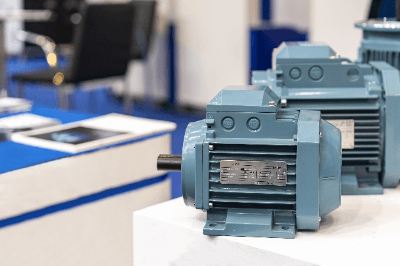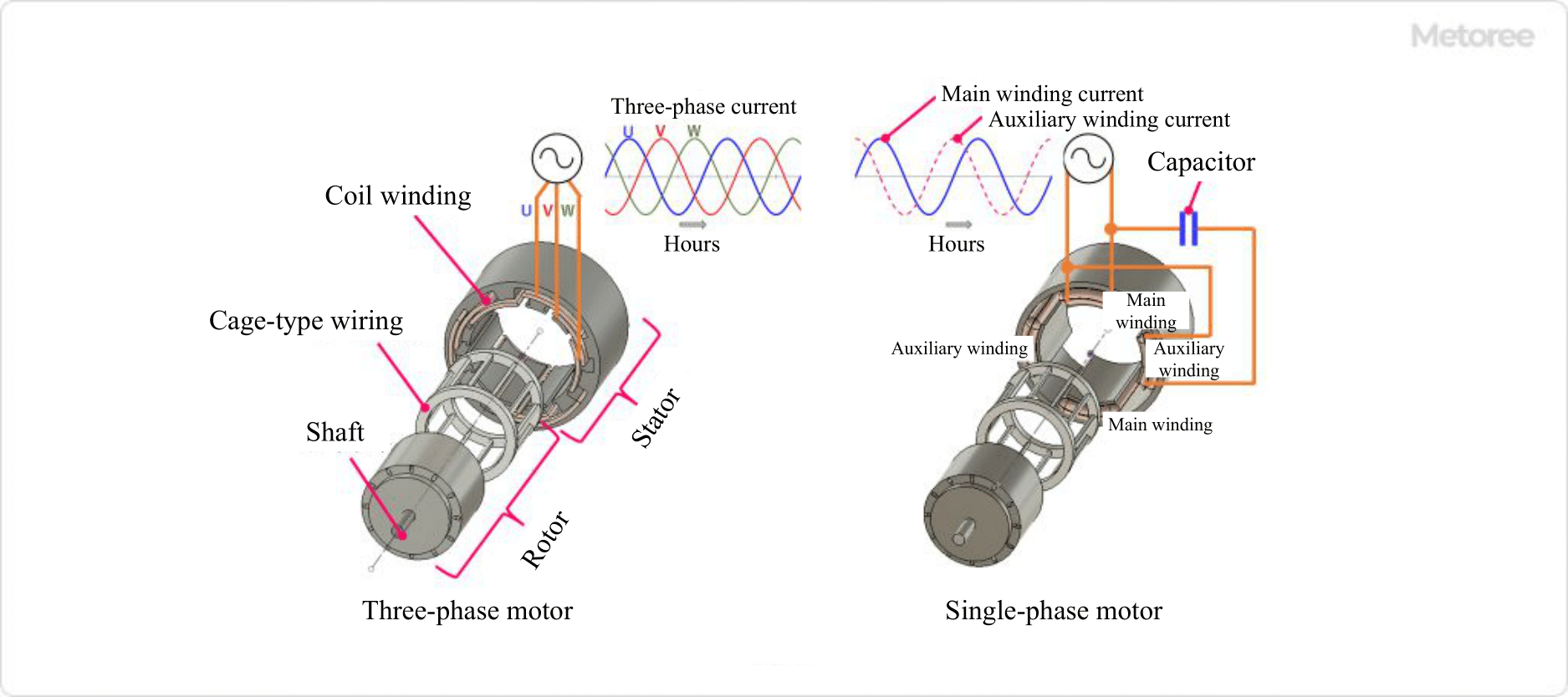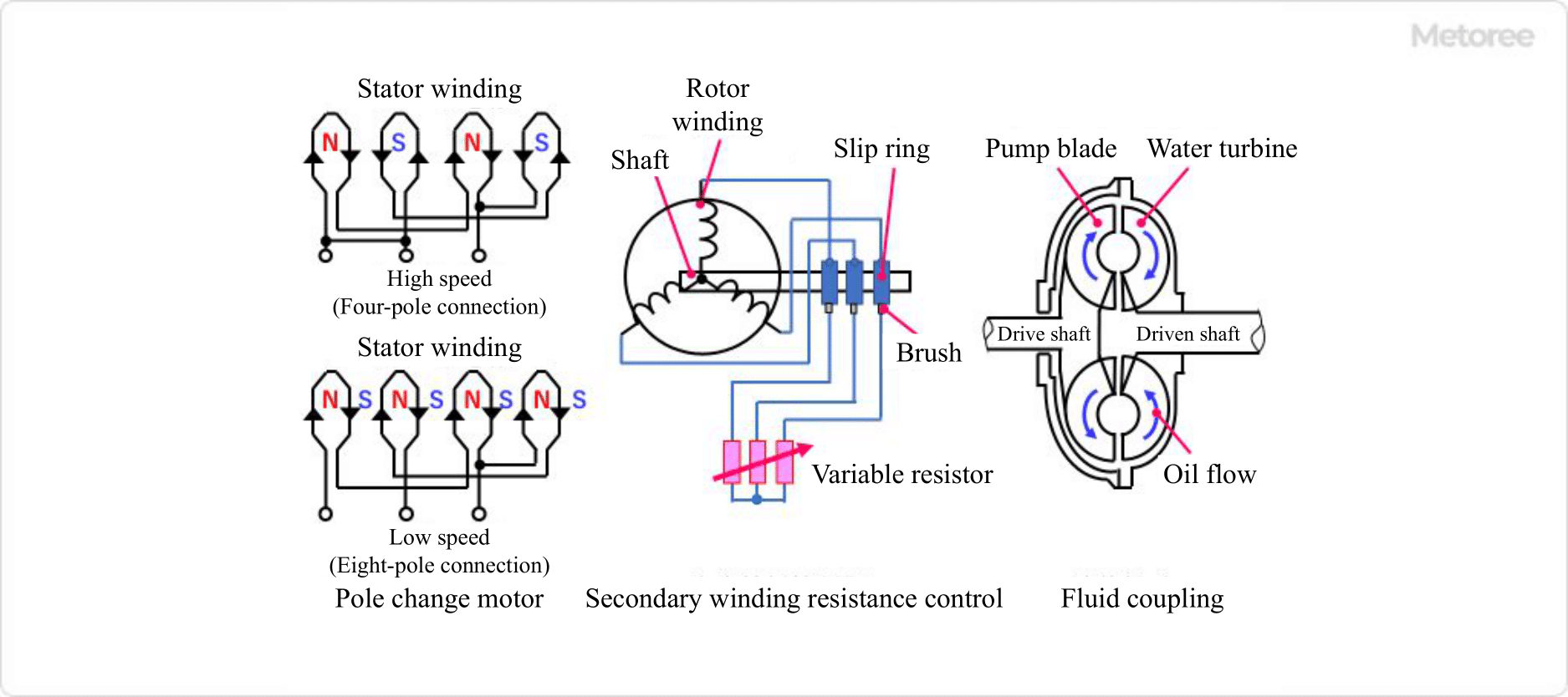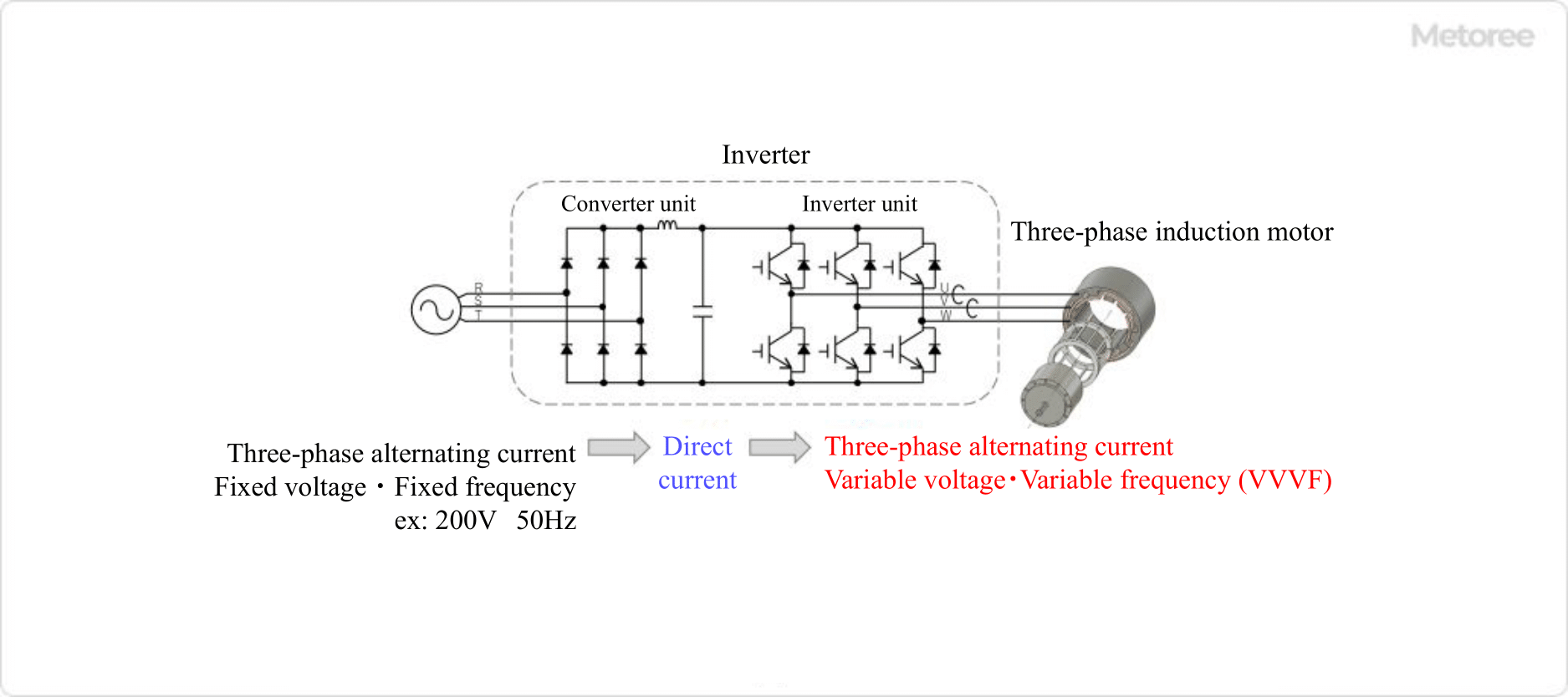What Is an Induction Motor?

Induction Motors are motors that operate on alternating current and are powered by the force generated by electromagnetic induction.
Therefore, they are also called AC motors with “AC” meaning alternating current. The induction motor is one of the oldest motors, with a simple structure that does not require any special power conversion, and operates simply by connecting to an AC power source.
As a result, they combine high reliability and long life and are still widely used today. Another advantage is that they do not use magnets that contain rare metals, so they provide highly efficient rotation at low cost.
Uses of Induction Motors
Induction motors are used in a wide range of applications, from home appliances such as washing machines and fans to large-scale production equipment for factory facilities, because of their characteristic of higher efficiency with larger capacity.
By changing the characteristics of motors, they are also used as a power source for items that require high starting torque, such as automatic doors, and for items that require high stopping torque, such as shredders.
Principle of Induction Motors

Figure 1. Principle of induction motors
Induction motors are broadly classified into two types, three-phase motors, and single-phase motors, according to the difference in AC.
1. Three-Phase Motors
Induction motors are composed of a “stator” and a “rotor”. The stator has coil windings that conduct three-phase alternating current, and the rotor has cage-shaped wiring that conducts current due to electromagnetic induction from the rotating magnetic field.
When this magnetic field passes through the cage-shaped wiring incorporated in the rotor, which is a conductor, a voltage is generated by electromagnetic induction. This induces a current to flow through the cage wiring, which in turn interacts with the rotating magnetic field from the stator to produce torque. The rotation of the rotor asymptotically approaches, but never equals, the speed of the rotating magnetic field generated by the stator.
The ratio of the rotating magnetic field speeds of the rotor and stator at this time is called the “slip” and is one of the major factors that determine the torque characteristics of induction motors.
2. Single-Phase Motors
To rotate a motor with single-phase AC, it is necessary to generate a rotating magnetic field. Therefore, a capacitor is incorporated in the auxiliary winding of the motor to generate a rotating magnetic field by connecting the main winding directly to the power supply and the auxiliary winding to the power supply via a capacitor.
When a single-phase alternating current is connected to the main winding and the auxiliary winding via the capacitor, the current in the auxiliary winding flows 90° ahead of the current in the main winding. These two 90° offset currents generate a rotating magnetic field and the motor gains rotational power.
Other Information about Induction Motors
1. Speed of Induction Motors
The rated rotational speed of induction motors is derived by the following equation.
N(rpm) = 120/p(number of poles) × f(Hz)
P is the number of poles of the motor and f is the power supply frequency. The lower the number of poles, the faster the motor rotates, and the higher the power supply frequency, the faster the rotation speed. Since the commercial power supply in Japan is set at 60 Hz in Western Japan and 50 Hz in Eastern Japan, the rated rotational speed of the motor depends on the number of poles when the motor is operated by the commercial power supply.
In addition, induction motors have slippage, which means that the rotation speed decreases little by little by the load torque, and the actual rotation speed is given by
N(1-s) (rpm).
2. Speed Control of Induction Motors

Figure 2. Speed control of induction motors
As mentioned earlier, the rated speed of induction motors is determined by the power supply frequency and number of poles. However, depending on the type of motor and power supply, the rotational speed can be changed. Speed control of induction motors is implemented in the following manner
Use of Pole-Change Motors Pole change is a motor in which the number of poles can be determined by the method of wiring. The disadvantage is that the motor itself becomes larger and less versatile. Also, the rotation speed can only be changed in steps according to the number of poles.
Resistance Control of Wire-Wound Motors Speed control is possible with wire-wound induction motors. The principle is a motor with coil windings instead of cage wiring for the rotor, and by passing a current through a resistor through the windings (secondary windings), slip is increased and the speed can be slowed down further from the rated value. However, there is a disadvantage in that a resistor is required.
In addition, a separate slip ring is required to pass current through the rotating rotor winding, which increases the number of parts and maintenance costs. Energy loss is also significant because of the heat generated from the resistance.
Rotation Speed Control by Fluid Coupling Smooth acceleration at startup can be achieved by using a fluid coupling, which connects the drive and driven shafts via hydraulic pressure.
Since the drive and driven shafts are connected via fluid, the fluid coupling absorbs large load fluctuations. However, since the drive and driven shafts are not rigidly connected, the oil is agitated, causing the oil to heat up and losses to occur, which is a demerit.
Inverter Speed Control of Induction Motors

Figure 3. Rotation speed control by inverter
Currently, induction motors generally use inverters for speed control. Three-phase AC power with fixed voltage and frequency is controlled by switching a three-phase bridge using power devices such as IGBTs to vary the rotation speed of the motor. By varying the voltage along with the frequency, the motor can be driven with a constant torque.
Energy loss is also extremely low, at only a few percent of the drive energy, thanks to improvements in semiconductor and control technologies, and is most widely used to control the rotational speed of induction motors at a time when the SDGs are being actively called for.